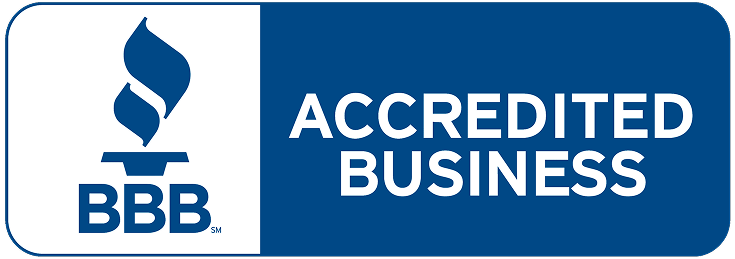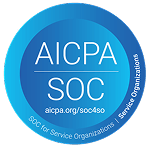What to do when your student visa application is denied
What to do when your student visa application is denied
It takes considerable time, money and energy to secure an international student visa for study in the U.S. Receiving a visa application rejection can feel discouraging after months of preparation.
According to the U.S. Department of State, 41% of F-1 international student visa applicants were denied in 2024 – the highest on record. If you were denied an international student visa, you’ll need to understand the reason for the decision and how to improve your application when you reapply.
5 common reasons for international student visa denials
Although each student’s situation is unique, there are a handful of reasons why student visa applications are typically rejected.
1. No ties to your home country
As a F-1 visa holder, you must demonstrate your intent to leave the U.S. after finishing your academic program. In other words, you must prove you’re not planning on immigrating to the U.S. after completing your studies. This is referenced as INA section 214(b).
To prove your intent to leave the U.S., your application must include evidence you have strong ties to your home country. For example, this might include a marriage license with a spouse or a deed to property that links you back to your homeland.
2. Insufficient financial funding
Another reason a consulate might deny your student visa application is if you didn’t provide sufficient proof of funds. International visa students must have a financial plan to cover school tuition and the cost of living in the U.S. while completing their studies.
In your application, include supporting financial documentation, like bank statements, scholarship or grant awards, and education student loans. If you’re an MPOWER Financing student, the visa support letter is emailed to you for this purpose.
3. Application issues
There are a lot of moving pieces in an international visa application, including the application form itself and any supporting documents you must provide. If your application or documents are incomplete, have errors or false information, this misstep can result in a rejection.
A denied application that references INA section 221(g) means your visa application, or the required supporting documentation, were incomplete. This code reference might also mean the officer reviewing your application couldn’t determine your eligibility, based on your application and needs more time to process it.
4. Institution or academic goals raises red flags
The school or academic plans that you present might be what sets off alarms. If the institution or program you’re enrolled in isn’t accredited, for example, a consulate officer might find reason to reject your application.
Additionally, being unable to articulate your academic plan or misrepresenting your intentions for studying in the U.S. might raise suspicions and negatively impact your visa application decision.
5. Unsuccessful visa interview
The F-1 student visa interview takes approximately 10 to 15 minutes, but it’s a major factor in whether your application is approved or denied. A common reason international students are denied a visa is because they presented themselves, or their statements, poorly during the interview.
Be prepared to honestly and confidently discuss your study plans, academic background, finances and plans after graduating from school. Also, make sure you’re dressed professionally, arrive on time and maintain appropriate eye contact with your visa officer during the interview.
What to do if a student visa is rejected?
If your international student visa application was denied, consider these next steps.
Identify the reason for the international student visa denial
Generally, if your application is rejected, you can reapply for a student visa by strengthening your application and repeating the same process. This means more of your time and money (you’ll need to pay another application fee).
To improve your application the second time around, make sure you know exactly why your application was rejected. The consulate officer’s decision might have been due to one or more of the reasons listed above.
If, for instance, the rejection was due to insufficient funds to study and live in the U.S. while you’re in school, find additional sources of savings. If you’ve maximized your out-of-pocket savings from home, consider borrowing an education student loan for study abroad. MPOWER Financing has helped more than 20,000 international students fund their postgraduate studies.
Address the issue thoughtfully and swiftly
When reassessing your international visa application, thoroughly gather all new information that substantially addresses the reason for the denial. Be deliberate about making corrections to any issues from your previous application and do so in a timely manner. If you performed poorly in the visa interview, now is the time to practice your statements.
Students with an MPOWER Financing international student loan can access visa application support to strengthen their visa application. MPOWER offers a free visa support letter as evidence of funding. MPOWER also has partnered with the global visa experts Catalyst Gem to provide resources, including mock interview prep and live Q&A sessions with a knowledgeable F-1 visa counselor.
Although there’s no timeline for reapplying for an F-1 visa, certain situations have a deadline. For example, if the reason for the denial was because of missing supporting documentation, you must submit it within one year from the rejection date to avoid having to re-apply and pay another application fee.
Reapply for an international student visa
Unfortunately, if the U.S. consulate rejects your international student visa application, there’s no formal appeals process for reconsideration. If the denial is due to more than just missing or incomplete documentation, you’ll need to re-do and re-submit your application, complete the visa interview, and pay the US$185 application fee.
Tips for improving your application
Keep these helpful tips for getting an F-1 visa, whether it’s you’re a first-time applicant or you’re reapplying:
- Stay organized. Have a dedicated physical folder that stores all of your application paperwork. Consider organizing this folder by date or category (e.g. proof of funding, proof of non-immigrant intent, etc.) Do the same for digital documents.
- Keep your interview responses concise. When preparing for your visa interview, practice how you’ll reply to the officer’s questions. Be clear, concise and confident when describing your academic plans, and avoid going off-topic.
- Work with an experienced F-1 visa counselor. Having access to a professional who’s knowledgeable about student visa regulations and processes can give you peace of mind.
- Stay positive. Facing a student visa rejection isn’t ideal, but remember, you still have options. Keeping your composure helps avoid needless mistakes when addressing application issues, and maintaining an enthusiastic attitude during the interview step sets a positive tone.
Going through the international student visa process more than once can feel stressful. Understanding the reason your application was rejected in the first place can empower you to make corrections the next time, if needed.

